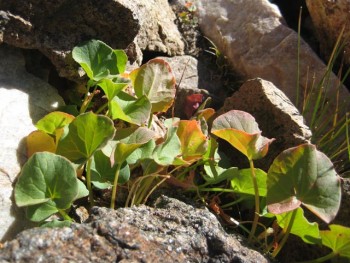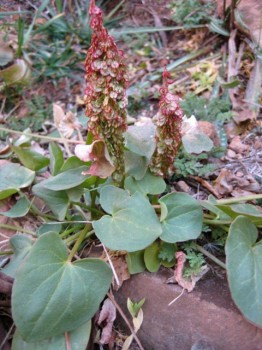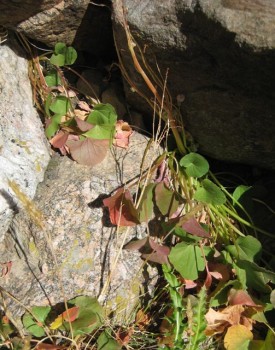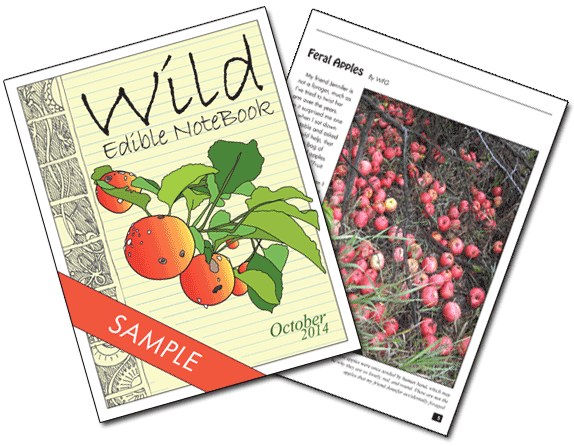
We found a healthy colony of mountain sorrel in a steep, rocky, dry creek bed above 11,000 feet this afternoon—another great discovery in an area that was starting to feel like we’d traveled it in its entirety and identified the last remaining wild edible plant therein. But today, after adding a quick scramble through the Bristlecone pines on a hillside above the mining road to an above tree line shelf, then traversing right and finding our way back down through the talus, we came upon a narrow creek bed with many small patches of mountain sorrel growing in it.
Mountain sorrel is the common name for Oxyria digyna. Like wood sorrel (Oxalis stricta, O. violacea) and even commercial spinach, Oxyria digyna contains oxalates, which should not be consumed in large doses. I’ve eaten wood sorrel plenty of times, but the mountain sorrel of Colorado (not to be confused with the low, three-hearted leaves of the mountain sorrel you find in Vermont, or upstate New York) had for the most part eluded me.

Prior to today I’d seen Colorado mountain sorrel on only three other occasions, and each time it was either as a solitary plant or two at most—certainly not enough to forage sustainably. I wondered if Oxyria digyna was a threatened species, but a search on the U.S. Forest Service’s endangered species list, both by common and scientific name, revealed no such thing.
The mountain sorrel I saw earlier this summer was very distinctive—each plant a fleshy cluster of red-tinged green, kidney-shaped leaves sporting flower stalks with distinctive vertical clusters of winged seeds. When I found some growing out of a mine hole, I picked two leaves so that Gregg and I could at least taste it, ignoring the fact that mine holes are probably the worst places to forage for wild food because some plants retain heavy metals extracted from the ground and are therefore unsuitable for human consumption.
(Thus, please do as I say and not as I do and avoid foraging in mine holes!)
But anyway, the taste was enough to discover that mountain sorrel has a pleasant, lemony flavor, similar to its lowland cousin but with juicier, more substantial leaves. After the initial taste, Gregg spent the rest of the hike that day looking for more, without success.

Hence our excitement today when we came upon the 25 or so healthy mountain sorrel plants in and among the rocks a stone’s throw uphill from our usual hiking spot. It’s October already and the flower stalks were empty of flowers or winged seeds and many of the leaves were turning red already, but we did find some green greens under the shade of overhanging rocks. We delighted in munching a few and then I gathered half a handful to put in our salad tonight.
Mmm. Dandelion, spinach, mountain sorrel salad—here we come!
It’s hard to express how fantastically satisfying it is to identify a new edible wild plant in sufficient quantity to serve as food, especially in my own back yard!

I’m originally from San Diego and love wood sorrel and ate lots of it! One way was to throw it in a sink of hot water where it turned a golden color and delicious. I have since moved to Denver (2005), go camping a lot but really miss wood sorrel. Does it even grow here?
Hi Debra, I am from the east coast originally and also enjoyed making use of yellow-flowering wood sorrel there. I see it in the Denver area occasionally, but usually just in disturbed areas–landscaping, even once in a houseplant. I have not seen a lot of it. We do get sheep sorrel (Rumex acetosella), however, and the flavor is fairly similar. Sincerely -erica
Going camping over memorial day weekend by spruce grove…hope to find something edible.